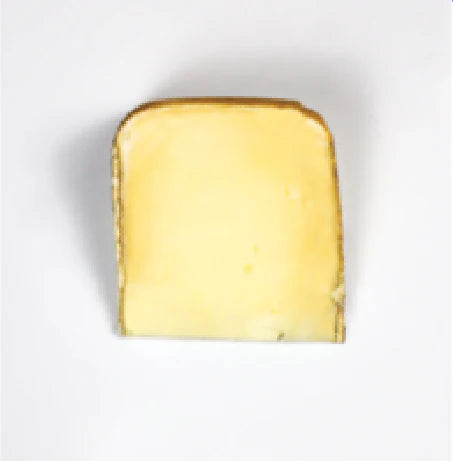MANCHEGO 1605
Producer: Queseria 1605, imported by Essex St. Cheese

LOCATION & HISTORY
Made famous by Don Quixote nearly 400 years ago, Manchego is one of the world’s most iconic and renowned cheeses, hailing from a region where sheep dairying can be traced back thousands of years. The La Mancha region of Spain is a plateau known for its continental climate — the arid plains here endure scorching summers and bitterly cold winters with little rainfall, but the Manchega breed of sheep used for cheese production here are accustomed to these conditions and continue to thrive and produce ideal milk for making Manchego. The name of the region is derived from the Arabic “Al Mansha” meaning “land without water,” and the name “Manchego 1605” is a direct reference to the year that Don Quixote was published by famed Spanish author Miguel de Cervantes.
The most authentic version of Manchego is the raw milk Manchego artesano, and there are only 29 producers left in Spain who still make this version, less than 5 of which are farmstead producers. Some of the remaining producers of farmstead Manchego artesano refer to their style as “leche de pastoreo,” meaning “shepherd’s milk,” since the wheels are made entirely from the raw milk of their own herds and with a natural rind instead of the more common waxed rind. The cross-hatch pattern on the rind of Manchego artesano pays homage to the traditional “pleita” (woven esparto grass basket) that this cheese was historically aged in to aid with whey drainage.
MAKE DESCRIPTION
This particular creamery is uniquely designed with an elevated vat in order to allow the least disruption of the solids in the milk and therefore avoid creating off flavors in the cheese. The whole raw milk is heated and coagulated using traditional lamb rennet, and the resulting curds are cut to resemble cottage cheese. The curds are then stirred and heated again to help release whey before being gently moved into the draining table below the vat. The curds and whey are released slowly, a bit at a time, so that the majority of the curds are protected in the warm vat until it’s time for hooping. The curds are placed into their molds by hand, while still immersed in the whey, two steps that are rarely done these days, even in farmstead production. Breaking up the curds by hand in the molds ensures an even texture without any cracks or fissures in the final cheese, as well as consistency across batches.
The green wheels are then pressed for half a day and brined with Valencia salt for roughly 18 hours before being moved to the drying cave, where lower humidity helps to release even more moisture and kickstart rind development. For 3–4 weeks, the wheels are turned every day and moved around in the cave for consistent exposure to all the ambient bacteria and microflora, and then they are moved to the second cave. This cave has much higher humidity as well as a higher temperature, which prevents the rinds from cracking and encourages healthy rind development. Every week, the wheels are rubbed and flipped and rotated around the cave to ensure even mold growth on the rinds. Developing a natural rind rather than waxing the wheels as is typical of industrially produced Manchego allows the cheese to breathe and slowly develop its beautifully complex flavors. Additionally, the wheels are not brushed until they are packed for sale, allowing the microflora present on the rind to protect it against unwanted molds and help further develop the cheese’s flavor as it ages.
After about 4.5 months of affinage, Essex. St. Cheese selector José Luis-Martin hand-selects the batches that meet their high standards and that can withstand the trip across the ocean, arriving just as delicious as they were made. A selection process this rigorous is not standard for many importers, and further illustrates Essex St. Cheese’s commitment to quality. The wheels are released around 5 months of age, and land in the USA around 6 months old, ready for their spotlight on the cheese counter.
PRODUCER HISTORY
Founded in 1878, Finca Sierra La Solana is a farmstead operation translating roughly to “The Sunny Ranch.” Although the farm has been around for 125 years, they only recently began making cheese again with Head Cheesemaker Maria José Gonzales at the helm. The mil comes from their own herd of about 2,000 sheep that graze freely when the weather allows, and rest comfortably in the barn when it gets too hot to be on pasture. When the lambs are born in the spring and fall, they enjoy quiet Mariachi music in the barn to keep them cozy and relaxed until at 3 weeks old, they leave the barn to explore the pasture for the first time.
TASTING NOTES
This toothsome Manchego boasts an incredibly clean flavor, with aromatic notes of cured ham, almond, and hay, and a gentle sweetness on the palate reminiscent of fresh cut pineapple and toasted brioche. You might notice a hint of warm spice on the finish with none of the piquancy that presents in longer-aged profiles.




